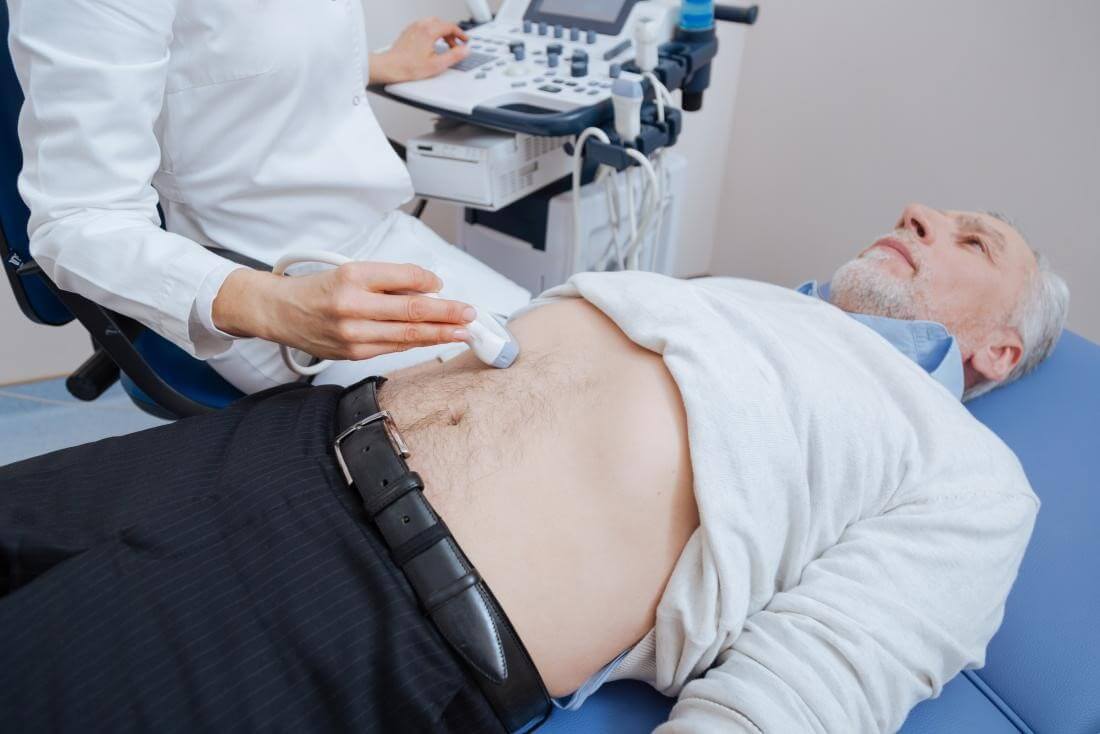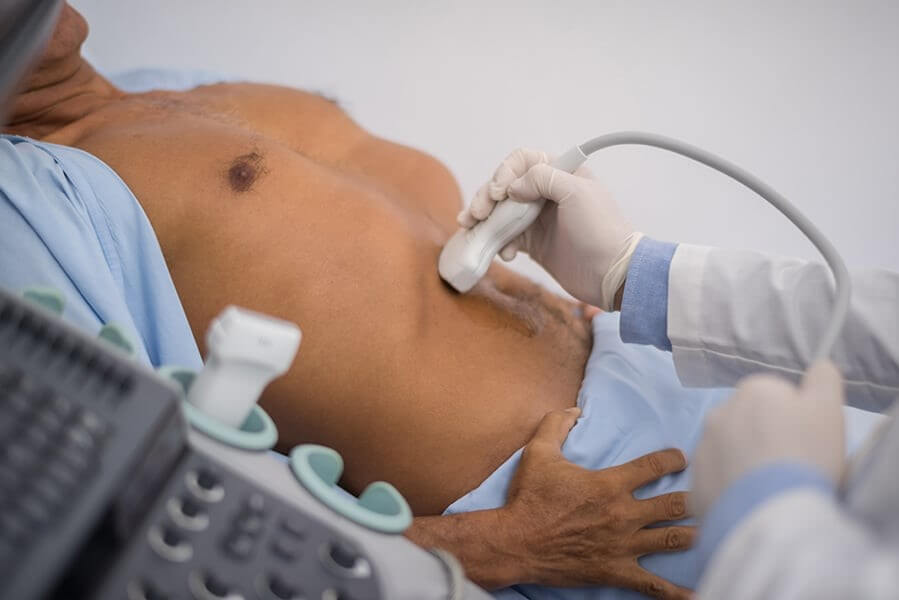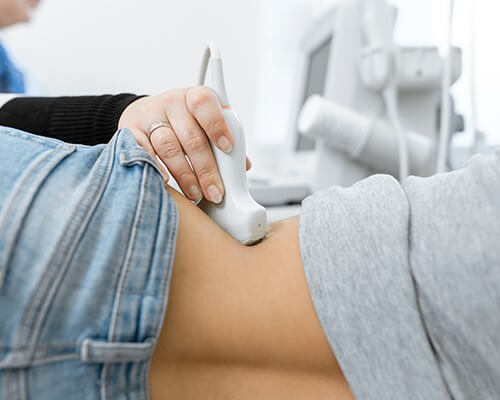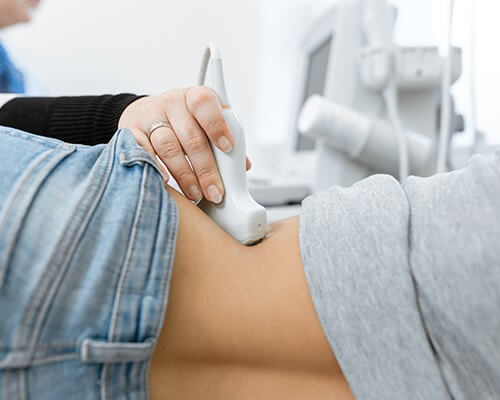Abdominal and pelvic ultrasound
Abdominal and pelvic ultrasound is performed to observe the structures inside the abdomen. This is a favorable screening method for the study of intra-abdominal abnormalities, mainly for evaluation in the abdominal aorta, the main blood vessel that delivers blood to the body. However, abdominal and pelvic ultrasound may be used to diagnose many other diseases.

Doctors recommend pelvic abdominal ultrasound to screen for abdominal aortas in men between the ages of 65 and 75 who are smokers. If you have never smoked, abdominal aortic aneurysm screening is not recommended for men (or women) unless your doctor suspects an aneurysm (aortic blood transfusion failure) or have a family history of aneurysm.
Why does abdominal and pelvic ultrasound be administered?
Abdominal and pelvic ultrasound
can help your doctor see many of your abdominal organs. If you have problems in any of these areas of the body, your doctor may prescribe an ultrasound of the abdomen and pelvis:
- Blood vessels in the abdomen
- Gallbladder
- Intestines
- Kidneys
- Liver
- Pancreatic
- Spleen
Pelvic abdominal ultrasound can help your doctor assess the cause of stomach pain or bloating. This can help check for kidney stones, liver disease, tumors and many other conditions.
What else can abdominal and pelvic ultrasound detect?
Doctors use abdominal and pelvic ultrasound scans to diagnose:
- Bladder stones.
- The spleen has grown.
- Gallstones
- Cholecystitis (inflammation of the gallbladder).
- Pancreatitis (inflamed pancreas).
- Cancer, such as stomach cancer or pancreatic cancer.
- Fatty liver disease.
- Abdominal aortic aneurysm (bulge in the wall of the aorta in your midsummer).
How should I prepare for abdominal and pelvic ultrasound?
Generally, general ultrasound scanning guidelines are available in medical scans. But specifically for abdominal ultrasound, however, you must follow the instructions below to achieve the best results.
Ultrasound imaging center experts may ask you to avoid eating or drinking a few hours before shooting a pelvic sono-abdomen. In some cases, you may need to drink a certain amount of water just before the abdominal ultrasound. Or you may not need to prepare at all.
Do I need to be nasty for Velgen’s abdominal ultrasound?
You should probably be unsealed for velgen abdominal ultrasound. Having a full (or empty) bladder or stomach can sometimes lead to blurring of abdominal ultrasound images. Ask your doctor if you should be premature before an ultrasound.

How is abdominal ultrasound performed?
Lie on your back on a comfortable bed for an abdominal ultrasound scan. You have to pull up your shirt or take off or wear a hospital gown.
During the scan, a trained specialist rubs the gel on your abdomen. The water-soluble gel covers any part of your abdomen that your doctor examines. This gel may give you a cold feeling. Don’t worry, this gel won’t hurt you or your clothes. Your doctor will then move the ultrasound probe on your skin. The specialist who performs this scan knows very well how to capture the clearest images of your abdomen. So they may ask you to turn side by side or hold your breath for a few seconds. Finally, your doctor or technician will remove the remaining gel on your skin.
If your doctor wants to check your blood vessels, your essen may also include a Doppler ultrasound. Doppler sound waves detail how blood flows inside your blood vessels.
How long does abdominal and pelvic ultrasound take?
Abdominal and pelvic ultrasound lasts as long as the doctor takes clear pictures of the areas in question. An ultrasound scan usually takes 30 minutes (sometimes less).
Does abdominal and pelvic ultrasound hurt?
Abdominal and pelvic ultrasound usually does not hurt. If the ultrasound probe touches a sensitive area, you may feel a slight strain or discomfort. Any discomfort you feel should be eliminated immediately.
Is ultrasound safe?
Yes, the medical community broadly agrees that ultrasound is a rigorous and safe test that should be performed by trained professionals. Unlike X-rays, ultrasound does not use radiation (which in high doses can cause medical problems). Ultrasound does not have known side effects.
When will the abdominal and pelvic ultrasound response be present?
After performing the scan, the radiologist (a doctor who specializes in reading medical images) examines the ultrasound images. This medical professional writes a report on the findings of the scan and usually the answer to abdominal and pelvic ultrasound is prepared between 3 and 5 days.
What should we ask our doctor about pelvic abdominal ultrasound?
If you need a pelvic abdominal ultrasound scan, you may need to ask your doctor:
- Will I need other tests?
- What should I do to prepare for ultrasound?
- When should I wait for the test results?

After an abdominal and pelvic ultrasound, your doctor will share the results with you later. Usually, if an aneurysm or other problems are not found, your doctor will not recommend any additional screening.
If an aneurysm or other problem is found, you and your doctor will decide together on a treatment plan that may include complementary screening or surgery.
Final word:
The specialized medical scanning team hopes this article entitled Abdominal and Pelvic Ultrasound will answer some of your ultrasound questions. You can scan the scan website and get the best ultrasound centers in the country from this website by visiting the
ultrasound
platform.








